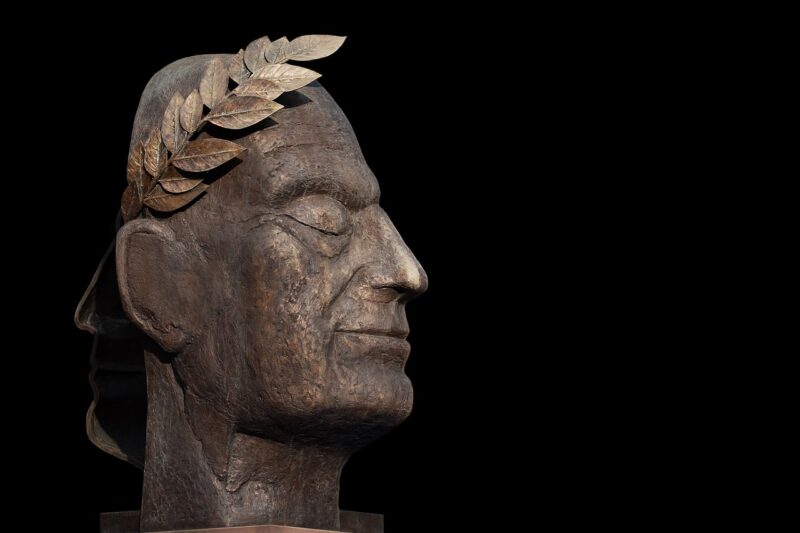
Genghis Khan, born as Temujin in 1162, transformed from a modest tribal leader into the founder of one of the largest empires the world has ever seen. His life and conquests, spanning vast territories in Asia and Europe, provide a fascinating glimpse into the strategies, innovations, and sheer will that enabled him to forge an empire that stretched from the Pacific Ocean to Eastern Europe.
1. The Early Life of Genghis Khan
Born into the Borjigin clan, Temujin faced tremendous challenges from a young age. His father was murdered by rival tribes, leading to a difficult childhood where he experienced abandonment and poverty. Temujin’s early struggles shaped his character, instilling in him a resolve that later played a crucial role in his rise to power.
During his youth, Temujin assembled a band of followers by winning their loyalty through shared hardships, showcasing his talent for leadership and charisma. His pivotal early alliances included marrying Börte, which helped him gain support from the powerful Kereit tribe. These relationships would become essential in his future conquests.
2. Uniting the Mongolian Tribes
Genghis Khan’s rise began in earnest as he recognized the disunity of the Mongolian tribes. To consolidate power and unite these factions under his leadership, he utilized diplomacy, marriage alliances, and brute force when necessary. After defeating the Tatars, who had slain his father, he gathered a coalition of tribes, emphasizing loyalty and steppe traditions.
In 1206, after a series of calculated battles and strategic partnerships, Temujin was proclaimed Genghis Khan, meaning “universal ruler.” This title marked the start of the Mongol Empire and the beginning of an unprecedented series of conquests. The unity of the tribes under his banner not only provided a formidable army but also established a centralized governance structure that had never existed before among the Mongols.
3. Military Innovations and Strategies
Genghis Khan’s military tactics revolutionized warfare. A key aspect of his success was the adoption of a highly mobile cavalry system that could outmaneuver most enemies. His army was known for its speed, discipline, and adaptability. Genghis Khan employed the tactic of feigned retreat, luring enemies into traps before striking decisively.
The Mongol warriors were masters of horsemanship and archery, making them lethal foes in open battles. They utilized extensive reconnaissance and dissemination of information through a messenger system, which allowed them to coordinate attacks with remarkable efficiency. Moreover, Genghis Khan understood the significance of psychological warfare and employed fear to demoralize enemies, often sparing those who surrendered, thus expanding his influence without permanent destruction.
4. Expansion of the Empire
After uniting Mongolia, Genghis Khan set his sights beyond the steppes. His first significant campaign was against the Khwarezmian Empire in 1219, which turned catastrophic for that kingdom due to Genghis Khan’s military prowess. This confrontation, fueled by trade disputes and diplomatic failures, showcased his strategic brilliance and marked the beginning of the Mongol Empire’s expansion into Central Asia.
The Mongol forces captured major cities such as Bukhara, Samarkand, and Otrar, employing both siege warfare techniques and direct assaults. Genghis Khan displayed remarkable organizational skills by dividing his army into smaller units, allowing for simultaneous attacks across multiple fronts. This strategy disrupted enemies and minimized their ability to respond effectively.
Following the swift conquest of Central Asia, Genghis Khan turned his attention toward China, targeting the Jin Dynasty. His forces adopted sophisticated siege techniques adapted from the Chinese, furthering their expertise in warfare. By 1227, the Mongol Empire continued to expand vastly, reaching into Europe, where it would later play a critical role in shaping the continent’s future.
5. Governance and Legacy
Despite his reputation as a ruthless conqueror, Genghis Khan was also a visionary leader. He established a merit-based system where loyalty and skill dictated promotions, significantly improving the army’s efficiency and morale. The implementation of the Yassa, a code of law dictating the conduct of citizens and respect for authority, provided a framework that maintained order across his vast empire.
Genghis Khan also promoted trade and communication along the Silk Road, facilitating cultural exchanges and economic growth. This development established a network that benefited not only the Mongol Empire but also surrounding regions. Moreover, his policies encouraged religious freedom, further expanding his influence across diverse populations.
By the time of his death in 1227, Genghis Khan had built an empire that covered millions of square miles and encompassed a variety of cultures, economic richness, and multicultural societies. His sons and grandsons continued his legacy, further expanding the empire after his demise.
6. Conclusion
Genghis Khan’s life is a testament to the impact of exceptional leadership, innovative military strategies, and the unification of diverse groups toward a common goal. The empire he established not only transformed the social and political landscape of Asia and Europe but also laid the groundwork for globalization. Genghis Khan forever changed history with his daring conquests, and his legacy continues to be felt in modern governance, warfare, and cultural interactions across the globe.
To understand how a single individual forged one of the most expansive empires in history is to appreciate the complexities of leadership and innovation in the face of adversity. Genghis Khan’s story serves as an enduring narrative of ambition, strategy, and the relentless quest for greatness.






